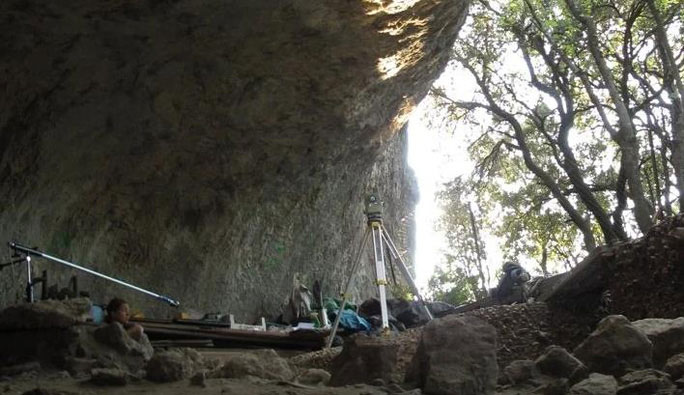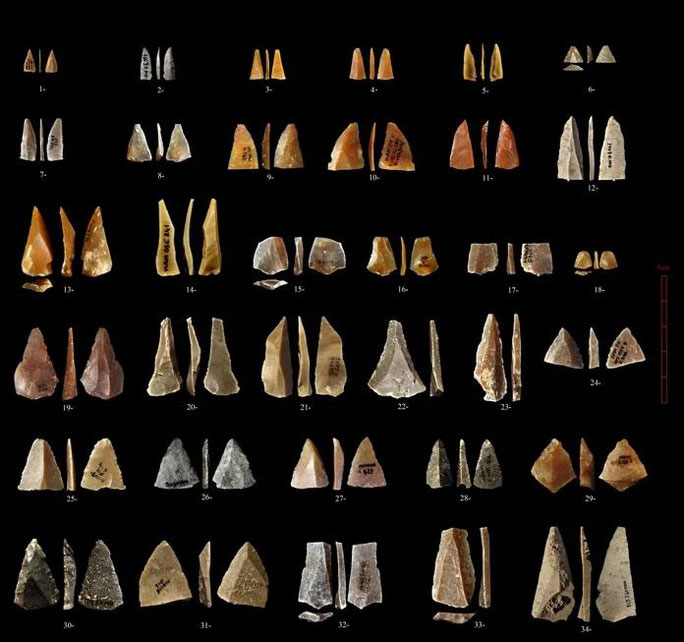Find the 'garden of paradise' where 2 human species met, creating us today
Modern Homo sapiens bears more or less the characteristics of other extinct human species, not by blood, but more or less skills inherited from distant ancestors. The way that happens has been discovered in a mysterious cave in France.
The Mandrin Cave in the Rhone region of southern France holds valuable evidence of the first Homo sapiens arriving in Western Europe and shows how they entered a land populated by Neanderthals.

Mandrin's Cave
Neanderthals are a "sister" to us Homo sapiens, belonging to the same genus Homo, which became extinct about 30,000 - 40,000 years ago.
According to Science Alert, a team of archaeologists and paleontologists led by Dr Ludovic Silmak from the University of Toulouse has found evidence that the first Homo sapiens arrived at Mandrin Cave 54,000 years ago.
In this multi-layer sedimentary cave containing 80,000 years of human habitation, there is an "E layer" containing at least 1,500 strange flint tools, made more sophisticated than those in the upper layers. on and under.
These small tools, some less than a centimeter in length, have intricately crafted details that are far more precise than what Neanderthals were able to make: it must be evidence of a visit by another human species. visit.

Finely crafted flint pieces
Later, a milk tooth was found in this class E, confirming the suspicion: the milk teeth of modern humans Homo sapiens. Continuing to dig deeper, they found another 9 teeth belonging to 6 individuals.
Other analyzes show that this modern human population, Homo sapiens, resided here for about 40 years before leaving, forming "class E". Other signs in the sediment suggest that they co-existed peacefully with the long-dwelling Neanderthals of the cave, apparently living together, learning from each other to survive.
The Neanderthals seem to have led these Homo sapiens to the best igneous sites, some as far as 90km away, where they could make these sophisticated tools. The way Homo sapiens came, enlisted Neanderthals and made better things - with that ancient world, maybe enough to decide domination - is exactly the way Europeans colonized the Americas tens of thousands of years later. there.
It seems our ancestors colonized Europe with Neanderthals that way. And earlier than we thought - 54,000 years ago, not 45,000 years ago, according to new findings.
Prior to that, there was ample evidence that Homo sapiens migrated to other human lands, interbreeding with Neanderthals in Europe, Denisovans in Asia, and possibly some unknown human species. is different. The evidence is that the genes of different species still exist in different communities around the world.
- The world's largest botanical garden on Oman desert
- Discover Margaret River's 'green paradise'
- 3800 year old potato garden excavation
- Discover the Eden garden of the human race in the ice age
- Not the apple, 'The forbidden fruit' Adam and Eve ate in the Garden of Eden is what fruit?
- Human evidence originated from a couple of parents
- Bac Lieu bird garden appears many rare and precious species
- Throw snails away 20m to clean your garden
- Masterpiece gardens in the world
- Mosquitoes 'sing' to find a mate
- The mysterious paradise of humanity
- Did meteor collisions help our human species evolve like today?
 Discovered an ancient centipede fossil 99 million years old
Discovered an ancient centipede fossil 99 million years old Discovered bat-like dinosaurs in China
Discovered bat-like dinosaurs in China Discovered a 200-year-old bronze cannon of the coast
Discovered a 200-year-old bronze cannon of the coast Discover 305 million-year-old spider fossils
Discover 305 million-year-old spider fossils If your hand has this spot, you may have the blood of another species.
If your hand has this spot, you may have the blood of another species.  'Ghost humans' discovered leaving 'hybrid offspring' in 3 modern countries
'Ghost humans' discovered leaving 'hybrid offspring' in 3 modern countries  Humans Unknown Hiding in Asia for 100,000 Years
Humans Unknown Hiding in Asia for 100,000 Years  Reconstructing the face of a person who lived 50,000 years ago
Reconstructing the face of a person who lived 50,000 years ago  East Asians carry genes of another human species with many abnormalities
East Asians carry genes of another human species with many abnormalities  Will history be turned upside down when a 780,000-year-old alien kitchen is discovered in the Dead Sea?
Will history be turned upside down when a 780,000-year-old alien kitchen is discovered in the Dead Sea? 